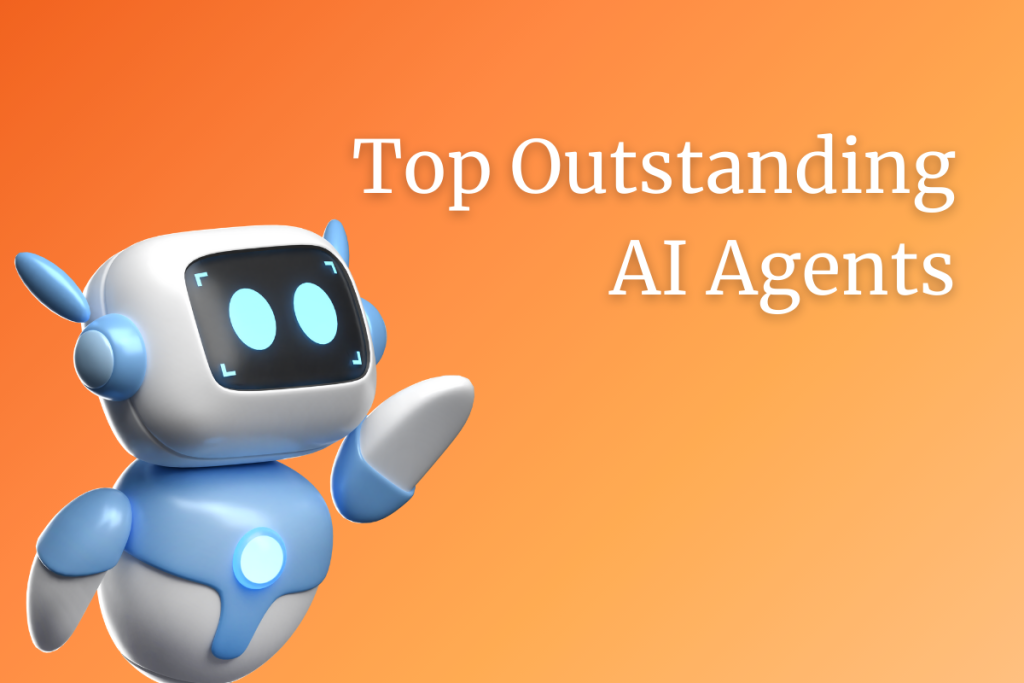Data-driven insights into the sectors experiencing explosive growth and reshaping the global economy by 2030.
As we accelerate towards a new decade, the global economic landscape is being redrawn by powerful forces of technological innovation, demographic shifts, and an urgent global call for sustainability. For savvy investors, entrepreneurs, and professionals, this transformation isn’t a challenge: it’s a gold rush. The question is, where do you stake your claim?
Analysis from leading market research firms like Statista and Gartner provides a clear roadmap to the sectors poised for explosive growth. If you’re looking to future-proof your career or your investment portfolio, these are the industries you need to be watching.
The Top 10 Fastest-Growing Industries by CAGR (2025-2030)
1. Artificial Intelligence (Global Market) – 27.67% CAGR
Market Volume Projection: $826.70 billion by 2030
The artificial intelligence revolution isn’t coming—it’s here, and it’s growing at breakneck speed. Statista projects the global AI market will expand by 27.67% annually through 2030, reaching a staggering $826.70 billion market volume.
What’s driving this explosive growth:
- Enterprise automation and efficiency gains
- Consumer AI applications (ChatGPT, voice assistants, recommendation engines)
- AI-powered healthcare diagnostics and drug discovery
- Autonomous vehicles and smart city infrastructure
- Financial services fraud detection and algorithmic trading
2. Artificial Intelligence (US Market) – 27.57% CAGR
Market Volume Projection: $223.70 billion by 2030
The United States remains the epicenter of AI innovation, with its domestic market projected to grow at a 27.57% CAGR. This represents over a quarter of the global AI market, highlighting America’s continued tech leadership.
Key growth drivers:
- Silicon Valley’s venture capital ecosystem
- Government AI initiatives and defense contracts
- Tech giants’ massive AI investments (Google, Microsoft, Amazon, Meta)
- University research partnerships and talent pipeline
3. AI Industrial Robotics – 24.69% CAGR
Market Volume Projection: $36.11 billion by 2030
The marriage of artificial intelligence and robotics is creating a manufacturing revolution. AI-powered robots are becoming smarter, more adaptable, and capable of complex decision-making previously requiring human intervention.
Transformation areas:
- Smart factories with predictive maintenance
- Quality control and defect detection
- Flexible manufacturing lines that adapt to demand
- Collaborative robots (cobots) working alongside humans
4. AI Robotics (General Market) – 23.37% CAGR
Market Volume Projection: $64.35 billion by 2030
Beyond industrial applications, AI robotics is penetrating healthcare, hospitality, agriculture, and consumer markets. From surgical robots to delivery drones, this sector represents the convergence of multiple high-growth technologies.
Emerging applications:
- Healthcare: Surgical robots, rehabilitation assistants, pharmacy automation
- Service industry: Hotel concierge robots, restaurant servers
- Agriculture: Autonomous tractors, crop monitoring drones
- Home: Cleaning robots, security systems, elderly care assistants
5. Renewable Energy – 16.9%
According to data cited from Statista, the global renewable energy market is on track to more than double, soaring past $2 trillion by 2030. While its CAGR might be slightly lower than the top SaaS companies, the sheer scale of investment is staggering. Market analyses project the industry’s CAGR to be in the robust range of 8.5% to as high as 16.9%.
Growth catalysts:
- Climate change policies and government incentives
- Dramatic cost reductions in solar and wind technology
- Corporate renewable energy procurement for data centers
- Energy storage technology breakthroughs
- Grid modernization and smart energy systems
- ESG investment mandates driving capital allocation
A perfect storm of falling technology costs for solar and wind, urgent government policy, and a corporate push for energy independence and sustainable practices supercharges this growth. For engineers, investors, and project managers, the green revolution offers a once-in-a-generation opportunity.
6. eCommerce – 18.9% CAGR
eCommerce growth, already accelerated by the pandemic, continues its relentless expansion. Mobile commerce, social commerce, and cross-border trading are opening new frontiers for online retail.
Key trends driving growth:
- Social media shopping integration
- Voice commerce and AI shopping assistants
- Augmented reality try-before-you-buy experiences
- Sustainable and direct-to-consumer brands
- B2B marketplace expansion
7. Healthcare Technology – 14.77% CAGR
Healthcare technology is experiencing unprecedented growth as telemedicine, wearable devices, and AI diagnostics transform patient care. An aging global population and focus on preventive care are major growth drivers.
Innovation areas:
- Telemedicine platforms and remote monitoring
- AI-powered diagnostic imaging
- Precision medicine and genomics
- Mental health apps and digital therapeutics
- Robotic surgery and rehabilitation
8. Cybersecurity – 12.3% CAGR
As digital transformation accelerates, so do cyber threats. The cybersecurity industry is booming as organizations invest heavily in protecting their digital assets and customer data.
Growth drivers:
- Increasing frequency and sophistication of cyberattacks
- Remote work security requirements
- IoT device security challenges
- Compliance and regulatory requirements
- Cloud security needs
9. Financial Services – 9.7% CAGR
FinTech Innovation Drives Traditional Banking Evolution
The financial services sector is being revolutionized by digital banking, cryptocurrency, blockchain technology, and AI-powered financial products. Traditional banks are partnering with fintech startups to stay competitive.
Transformation areas:
- Digital-only banks and neobanks
- Cryptocurrency and blockchain adoption
- AI-powered robo-advisors and trading
- Buy-now-pay-later services
- RegTech and compliance automation
10. Information Technology Services – 8.38% CAGR
The Foundation of Digital Transformation
IT services remain the backbone of business digital transformation, encompassing cloud migration, software development, system integration, and managed services.
Key service areas:
- Cloud computing and migration services
- Software development and DevOps
- IT consulting and digital strategy
- Managed services and outsourcing
- Data analytics and business intelligence
Regional Growth Patterns and Opportunities
The analysis of fast-growing industries through 2030 highlights significant regional variations in growth rates and sectoral performance.
North America
North America is poised for substantial growth, particularly in the artificial intelligence (AI) market, which accounted for 29.5% of global revenue in 2024, spurred by favorable government initiatives promoting AI adoption across various industries. The construction sector is also expected to see a 32% increase in output, reaching an estimated US$2.4 trillion by 2030, driven by a recovery from the COVID-19 pandemic and heightened demand for infrastructure and housing. Moreover, the U.S. manufacturing sector is transforming, especially in the automotive and semiconductor industries, with an anticipated GDP boost of over 15% from key manufacturing industries.
Europe
In Europe, the financial sector is experiencing a transformation through the integration of AI technologies, enhancing customer experiences and operational efficiencies. The region is expected to maintain a substantial growth rate in AI applications as businesses adapt to the evolving technological landscape.
Asia Pacific
The Asia Pacific region is projected to experience the highest compound annual growth rate (CAGR) across multiple industries, including AI, where it is expected to grow significantly, particularly in financial services and eCommerce. The automotive sector in countries like India and Indonesia is surging, with these emerging markets contributing significantly to the global automotive landscape. The region is anticipated to see a 50% increase in construction output, highlighting its role as a critical growth driver through 2030.
Emerging Markets
Emerging markets, notably in Latin America and Africa, are set to witness a significant rise in retail eCommerce as internet penetration increases and the middle class expands. By 2040, retail eCommerce is estimated to represent up to 29% of total retail sales in Latin America, showcasing the potential for rapid growth in these regions despite ongoing challenges.
Challenges and Risks
The fastest-growing industries through 2030 face numerous challenges and risks that could impact their growth trajectories and operational stability. These challenges encompass various factors, including labor shortages, regulatory changes, and technological adaptation.
Economic Factors
Broader economic conditions, including inflation and income inequality, also pose challenges to industry growth. Economic stagnation can hinder consumer spending and investment, impacting sectors reliant on discretionary spending. Moreover, shifts in demographic patterns and workforce dynamics will require industries to remain agile and responsive to changing market conditions.
Labor Shortages
One of the most pressing issues across multiple industries, particularly in construction, is the persistent labor shortage. This shortage is exacerbated by stringent U.S. immigration policies, making it difficult to meet the increasing demand for housing and infrastructure development. Companies must invest in workforce development and consider flexible contract provisions to mitigate this risk while striving to capitalize on emerging opportunities in the market.
Regulatory Changes
Regulatory scrutiny is anticipated to increase as industries adapt to new technologies and practices. For example, the automotive sector is expected to face a tightening of regulations related to safety and environmental standards, particularly concerning the adoption of autonomous vehicles. Regulatory frameworks will significantly influence operational capabilities and the pace of technological innovation.
Supply Chain Disruption
Supply chain disruptions have continued to pose significant risks to industries, driven by factors such as geopolitical tensions and the lingering effects of the COVID-19 pandemic. Challenges include rising tariffs and the need for diverse material sourcing strategies. Companies that effectively navigate these complexities will be better positioned to sustain growth and respond to market demands.
Technological Adaptation
The rapid pace of technological advancement presents both opportunities and challenges. Industries must adapt to emerging technologies like artificial intelligence (AI) and building information modeling (BIM), which may require new skill sets that are currently in short supply. Slow adaptation to these technologies can lead to inefficiencies and hinder competitive advantage in an increasingly digital landscape.
Positioning for the Future
The next five years will create new market leaders and redefine what a “growth industry” truly is. By understanding these powerful trends today, you can position yourself to be a leader in the economy of 2030.
Ready to dive deeper?
Follow the Data: The numbers don’t lie. The highest returns on investment, whether it’s for your money, your time, or your career, will be found in the digital, sustainable, and healthcare sectors.
Embrace “Tech-Infusion”: Notice a common thread? AI, software, and data analytics are not just standalone industries; they are catalysts amplifying growth in other sectors like healthcare (AI in Drug Discovery) and even energy (smart grids). Understanding technology is no longer optional.
Think Globally, Act Sustainably: The renewable energy transition is not a trend; it’s a global economic reset. Businesses that align with this transition, either directly or by greening their own operations, will be better positioned for long-term success.
Data sources: Statista, Bureau of Labor Statistics, McKinsey Global Institute, Oxford Economics, Grand View Research. Growth projections based on compound annual growth rate (CAGR) calculations for the period 2024-2030.
ContactContact
Stay in touch with Us




